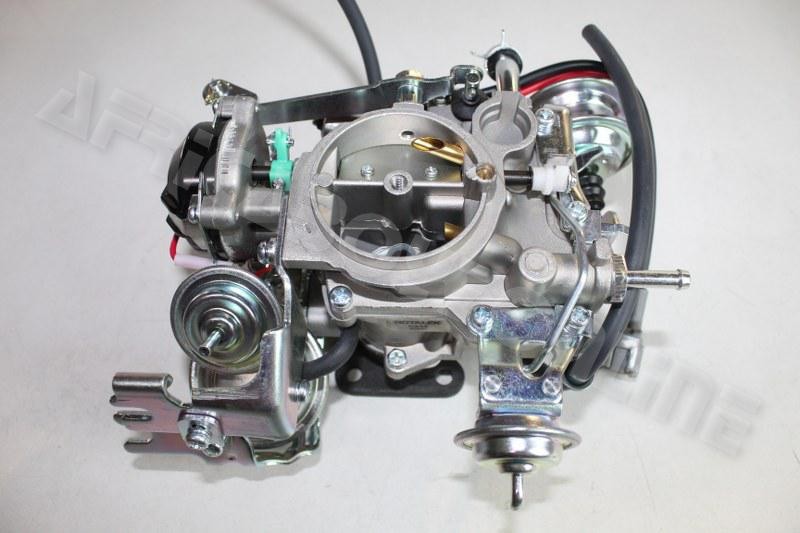Toyota Tazz: A Compact Car That Offers Big Value and Long-Term Durability
Wiki Article
Explore the most up to date Fads in Engine Technology Through Tazz
In the swiftly advancing landscape of auto modern technology, Tazz stands at the center, highlighting considerable improvements in engine systems that prioritize both innovation and sustainability. From crossbreed engines that maximize fuel efficiency to the appearance of hydrogen gas cells, the patterns shaping modern-day powertrains are not only enhancing efficiency however also addressing essential ecological challenges.Crossbreed Engine Innovations
Crossbreed engine developments represent a crucial shift in automotive modern technology, integrating the advantages of interior combustion engines with electrical propulsion systems. This integration not just enhances gas effectiveness yet likewise reduces discharges, meeting progressively stringent ecological regulations. By making use of both energy resources, hybrid engines can optimize efficiency, delivering power when needed while preserving fuel throughout less demanding motoring conditions.Current advancements in crossbreed modern technology include renovations in battery efficiency and regenerative stopping systems. These technologies enable for better energy healing throughout deceleration, which can be redirected to aid in acceleration or power auxiliary systems. Moreover, manufacturers are concentrating on light-weight products and compact styles to maximize the efficiency of hybrid powertrains.
The growth of plug-in crossbreeds has actually also expanded the market, allowing motorists to bill their lorries using basic electrical outlets. This function commonly enables substantial all-electric range, more lowering dependence on conventional fuels. tazz. As the automotive market remains to evolve, hybrid engine technologies are anticipated to play a crucial role in bridging the space between conventional automobiles and completely electrical designs, offering a transitional service that accommodates diverse customer demands and choices
Developments in Electric Powertrains
The vehicle landscape is quickly developing, with electric powertrains becoming a leading pressure in sustainable transportation. Advances in electrical automobile (EV) innovation are considerably enhancing effectiveness, user, and efficiency experience. Key technologies consist of improvements in battery chemistry, which have actually enhanced power thickness, reduced billing times, and prolonged total battery life.Solid-state batteries, for instance, promise to reinvent the market by giving higher safety and security and effectiveness contrasted to standard lithium-ion cells. Furthermore, innovations in regenerative braking systems are making it possible for cars to recoup energy throughout slowdown, adding to total efficiency.
In enhancement to battery technology, electrical motor layouts are becoming a lot more innovative. Innovations such as integrated electric motors and progressed thermal administration systems are aiding to maximize power delivery and decrease weight, inevitably boosting vehicle dynamics.

Jointly, these breakthroughs emphasize the dedication to change in the direction of cleaner, a lot more effective transportation services, positioning electrical powertrains at the center of auto advancement.
The Increase of Hydrogen Fuel Cells
Increasingly, hydrogen fuel cells are obtaining grip as a feasible option to conventional internal burning engines and battery electric cars. This innovation takes advantage of the chemical power saved in hydrogen, transforming it right into electrical energy with an electrochemical response with oxygen. The primary result of this procedure is water, making hydrogen fuel cells an eco-friendly alternative with no exhausts at the tailpipe.
Automakers are progressively spending in hydrogen gas cell technology, recognizing its capacity for long-range applications and quick refueling capacities that rival traditional gas. In addition, fields such as heavy-duty transport and public transit are especially appropriate for hydrogen gas cells, where battery electrical options might drop short as a result of weight and range limitations.
As research and investment continue to expand, hydrogen fuel cells are poised to play a considerable function in the future landscape of clean transportation and energy services.
Enhancements in Internal Combustion Engines
Developments in internal burning engine (ICE) innovation are transforming typical lorries to satisfy modern ecological requirements and performance assumptions. my company Direct gas injection, for instance, permits for much better atomization of gas, leading to even more complete burning and improved power result.Furthermore, turbocharging has obtained importance, permitting smaller sized engines to deliver greater performance without the weight of larger engines - tazz. This modern technology not only enhances effectiveness yet likewise contributes to reduce gas usage. Variable shutoff timing systems are likewise being improved, allowing engines to his comment is here adjust to various driving problems for improved torque and responsiveness
Additionally, the use of light-weight products in engine building is coming to be conventional, more improving gas efficiency by minimizing total car weight. Engine control devices (ECUs) are increasingly advanced, making it possible for real-time adjustments that enhance efficiency and exhausts.
These enhancements jointly signify an essential change in ICE technology, aligning with worldwide sustainability objectives while still providing the performance motorists anticipate from their vehicles. As the industry progresses, these renovations proceed to shape the future of conventional vehicle design.
Future Fads in Engine Performance
Significant developments in engine effectiveness are expected as suppliers concentrate on incorporating cutting-edge technologies to meet strict environmental guidelines and customer demands. The shift towards electrification, hybrid systems, and alternate fuels is reshaping the automobile landscape, driving developments that improve fuel economic climate and decrease discharges.One of the essential trends is the implementation of advanced materials and making strategies. High-strength alloys and lightweight composites add to reduced vehicle weight, hence boosting general effectiveness. Additionally, the adoption of turbocharging and variable shutoff timing modern technologies enables enhanced power output from smaller sized engines, better improving fuel economy.

Conclusion
In verdict, the exploration of engine modern technology reveals substantial developments that focus on sustainability and efficiency. Advancements in hybrid engine systems, electric powertrains, and hydrogen gas cells demonstrate a dedication to reducing discharges while boosting performance. Renovations in internal burning engines and an emphasis on lightweight materials contribute to total engine efficiency. As the automobile sector proceeds to develop, these patterns will certainly play a crucial function in forming a cleaner and even more lasting future for transportation.From crossbreed engines that enhance gas performance to the appearance of hydrogen gas cells, the trends shaping modern powertrains are not only enhancing performance but also dealing with vital environmental difficulties.Hybrid engine advancements represent a critical shift in automobile innovation, integrating the benefits of internal combustion engines with electrical propulsion systems.In addition, turbocharging has actually gotten importance, enabling smaller engines to deliver higher efficiency without the weight of bigger engines. Furthermore, the adoption of turbocharging and variable valve timing technologies permits for boosted power outcome from smaller engines, further boosting gas economic climate.
Enhancements in internal burning engines and an emphasis on lightweight materials add to general engine performance.
Report this wiki page